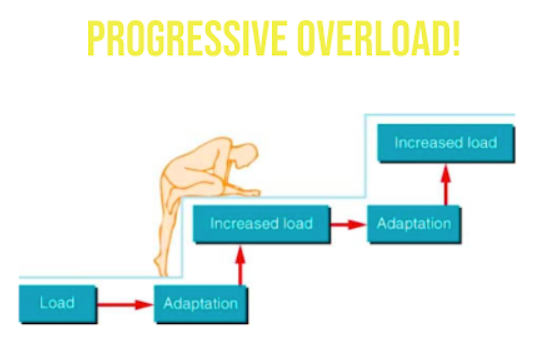
Why Progressive Overload Still Reigns Supreme in Strength Training
Introduction: The Core Law of Strength
Trends come and go — new training methods, fancy equipment, exotic recovery tools — but one principle has stood the test of time for over a century. That principle is progressive overload. No matter how modern your gym looks or how advanced your app tracks your lifts, without overload, you won’t grow stronger. It is the law of adaptation that governs all physical progress — from hypertrophy to power to endurance.
1. What Is Progressive Overload?
Progressive overload simply means gradually increasing the demands placed on the body to stimulate continual adaptation. If you lift the same weight, for the same reps, for the same duration — your body has no reason to change. But when the workload becomes slightly harder — heavier weight, more reps, faster execution, shorter rest — your body is forced to adapt to survive.
That adaptation = growth and strength.
In essence:
“If it doesn’t challenge you, it won’t change you.”
— NASC Coaching Principle
2. The Science Behind Overload
The human body operates under a simple biological model known as SAID — Specific Adaptation to Imposed Demands. This means your body adapts precisely to the stress it experiences.
When stress (training load) is applied:
-
Performance temporarily drops (fatigue).
-
Recovery occurs, rebuilding the system stronger.
-
Supercompensation happens, where your performance exceeds the previous baseline.
If the next training stimulus doesn’t exceed that new baseline — progress stalls. If it exceeds too much — recovery fails, leading to regression or injury. The key is balance — a measured and intelligent increase in training load.
3. Practical Ways to Apply Progressive Overload
Progressive overload isn’t just about adding more weight to the bar. NASC coaches use multiple dimensions of overload to ensure long-term progress without burnout.
| Method | Example | Adaptation Targeted |
|---|---|---|
| Load Increase | Add 2.5–5% weight each cycle | Maximal strength |
| Volume Increase | Add an extra set or rep | Hypertrophy |
| Density Increase | Reduce rest between sets | Muscular endurance |
| Speed/Power Increase | Lift same load with higher velocity | Explosive strength |
| Technical Complexity | Progress from machine → free weight → unstable surface | Motor skill & stability |
Smart coaches know when to pull each lever — not all at once, but systematically across training blocks.
4. Why Many Athletes Plateau (and How to Fix It)
Athletes often stop progressing not because they lack effort, but because their training becomes stagnant. Common mistakes include:
-
Doing the same workouts week after week.
-
Increasing load too aggressively without recovery.
-
Ignoring sleep, nutrition, and recovery tracking.
-
Not monitoring training volume over time.
Solution: Apply structured progression models such as:
-
Linear progression (ideal for beginners)
→ Gradually add weight each week. -
Undulating progression (intermediate to advanced)
→ Vary volume and intensity across days or weeks. -
Block periodization (elite performance)
→ Focus each phase on specific adaptations (e.g., accumulation, intensification, realization).
These systems allow overload without chaos — a balance between stress and recovery.
5. How NASC Coaches Apply the Principle
At NASC, progressive overload isn’t treated as a concept — it’s a quantifiable process. Our certified coaches are trained to:
-
Track total training volume (sets × reps × load).
-
Measure velocity loss to gauge fatigue.
-
Monitor heart rate variability (HRV) to manage recovery.
-
Use testing benchmarks (1RM, CMJ, sprint times) to ensure progression translates into performance.
This transforms overload from guesswork into data-driven progression — the hallmark of scientific coaching.
6. The Real Power of Overload: Adaptation Beyond the Gym
Progressive overload doesn’t just build stronger muscles — it builds a stronger mindset. Athletes who understand this principle realise that growth comes from consistent, incremental challenge — not comfort.
Every week, lift a little heavier.
Run a little faster.
Recover a little smarter.
Over time, those small, deliberate increases turn ordinary effort into extraordinary performance.
Conclusion: The Law That Never Breaks
Training trends evolve, but biology doesn’t. The body will always respond to stress, recover, and adapt — if you push it intelligently. That’s why progressive overload remains the undisputed law of strength. Ignore it, and you stall. Master it, and you’ll rise. In the world of performance science — progressive overload isn’t optional. It’s inevitable.
References
-
Zatsiorsky, V. M., & Kraemer, W. J. (2006). Science and Practice of Strength Training. Human Kinetics.
-
Kraemer, W. J., & Ratamess, N. A. (2004). Fundamentals of resistance training: Progression and exercise prescription. Medicine & Science in Sports & Exercise.



